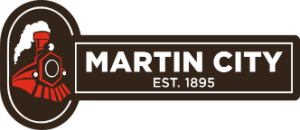Rosehill Garden’s owner Curtis Stroud sheds light on how to save your precious trees…
The beetle that has infested much of the Northeastern United States has made its’ way to Kansas City. The truth is, if we are just now seeing the beetle itself, that means it has already been here for two to four years. While not a threat to human or animal health, this beetle is destructive to the 4.6 million ash trees in the Kansas City region. So are our beautiful ash trees doomed?
Some areas in other cities have thrown in the towel and cut all the ash trees down. Other cities have actually paid money out of city budgets to save trees. Our advice is to consider alternatives before making any decisions. First of all, keeping your tree healthy and vigorous is of utmost importance. This means keeping them properly pruned, mulched, and watered and avoiding bark wounds to help them reduce the risk of any kind of insect attacks. Also, a healthy tree responds better to treatment. Keep in mind researchers are working across the country to find new chemicals to control EAB. In the past, they have been successful at finding natural solutions to solve natural problems.
Consider treatments
If you decide to treat your ash tree, the two main factors are timing and placement. What measures you decide to use should depend on the timing of where EAB is and what time of year it is. Most publications say wait until EAB is found within 15 miles of your property before treating for EAB, or if your property is located within 15 miles of an EAB quarantined area. What we would say is, depending on the time of year and how much you care about a specific ash tree can determine when you may want to treat the tree more so than your proximity to where EAB has been found. EAB is very difficult to track and control so no one can guarantee that EAB isn’t closer than we think. One infected log transported from an infected area will be another neighborhood of dead ash trees in 2 years.
The other factor is the timing of treatments. They are most effective when the tree is carrying nutrients up the tree, therefore depending on the treatment, your tree can only effectively be treated from February through July, or during September. If you decide to wait on treating your tree, you may be taking a chance. By the time you’re able to effectively treat it, you may already have EAB. Although there are treatments to kill EAB after it has infested your tree, obviously it’s best to prevent EAB from ever doing any damage and weakening it by catching it beforehand. Chemical treatments are taken up through the tree the same way nutrients are. If damage prevents the nutrients from being taken up, the chemical treatment cannot be absorbed as well. Early treatment and prevention is best to insure protection. This isn’t a scare tactic to get people unnecessarily treating trees. It is insurance against EAB and its’ unguaranteed at that. You’ll have to make your own decisions as to whether, when and how to treat your trees.
HERE’S A GREAT VIDEO ON HOW TO SAVE YOUR TREES!
ROSEHILL GARDEN’S RECOMMENDED TREATMENTS:
Soil Drench Method
Without calling a company such as Rosehill with licensed chemical applicators, there is only one way at this point that individual tree owners can treat their trees for EAB. It is a soil drench method that should be put down between February and May as the roots of the tree wake up. It is applied to the soil at the base of the tree. The tree will come out of dormancy and pull the chemical Imidacloprid, or commonly known as Merit, up throughout the tree. It will kill any larvae and future larvae. The residual effect is expected to last up to one year. It is only recommended for smaller ash trees because of the limits on the concentration of the chemical allowed. We carry a couple of options in our retail center for customers to apply themselves. For larger trees or better protection, you will need to call a company such as Rosehill to apply a higher concentration.
Rosehill will offer two other options beyond the soil drench method that must be applied by a chemical applicator:
Bark Spray Method – The bark around the trunk of the ash tree is sprayed from the ground to 6 – 7 feet up the tree. It is fast acting and lasts one year. It is applied from May untill mid-July and kills eggs laid in the bark, as well as larvae trying to burrow into the tree. This method is both preventative and can be used to kill EAB larvae currently existing within the tree.
Tree Injection Method – A highly concentrated chemical is injected directly into the vascular system of the tree. This is the only method that last up to 2 years. It is applied from May through July, and also during September. This method, with the correct timing, is the best option for a tree already showing signs of damage. It has been proven to kill 99% of EAB larvae, and has a very quick uptake. This method is both preventative and curative.
To treat or not to treat
We will be making recommendations for all three methods to our customers based upon many factors. The time of year will be a key factor, along with any damage done to the tree already. If over 30% of the tree is already damaged from EAB, we may recommend that treatments cannot help. The tree will be hard to save at that point and may not heal well enough aesthetically to be worth saving. Keep in mind, treating trees with existing EAB damage ‘can’ kill damaging larvae and allow the tree to heal itself, but it will take time, possibly years, before you may see signs of the tree looking better.
Deciding whether to treat your tree for EAB, or simply removing the tree if and when it gets EAB are difficult decisions. There are many benefits to consider when deciding whether to save your ash trees:
• The loss of shade that contributes to the quality of life in your yard
• The loss of property value that can result
• Increased energy costs without the tree
• The actual cost of removal can be in the hundreds or even the thousands to remove
• The cost to grind down the stump is usually $300 to $500
• The cost to put in a replacement tree depending on size can be $300 to $1,500
• Treating your tree can give researchers time to come up with a possible solution to EAB
• Commercial properties can treat to postpone tree removal costs
Please help stop the spread of the Emerald Ash Borer.
Don’t bring in firewood from outside your area and don’t transport firewood to other areas. Educate yourself and always be on the lookout for EAB. For more information on EAB, an excellent source is eab.missouri.edu. If you suspect your ash tree is infected, or if you are interested in having your ash trees treated for EAB, call us at Rosehill at 816 941-4777 to talk to one of our experts.
Curtis Stroud, owner and Randy Dukes, Maintenance Supervisor Rosehill Gardens, Inc.


